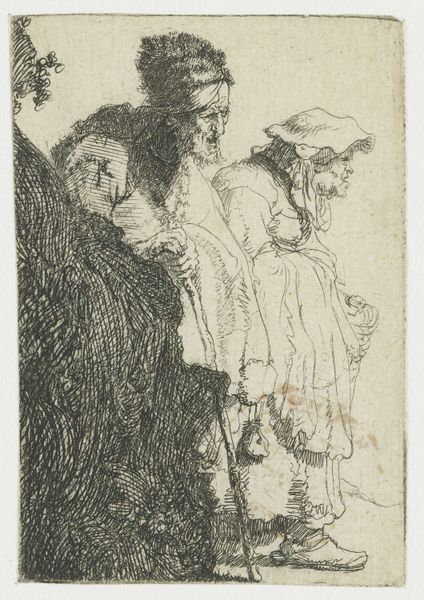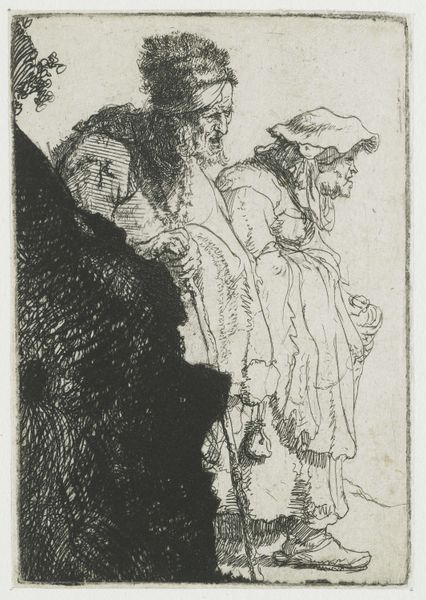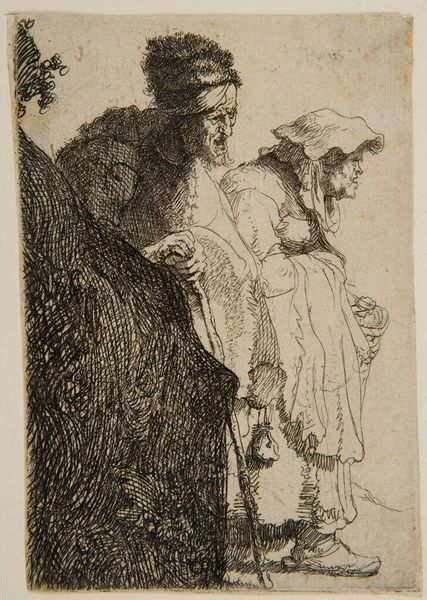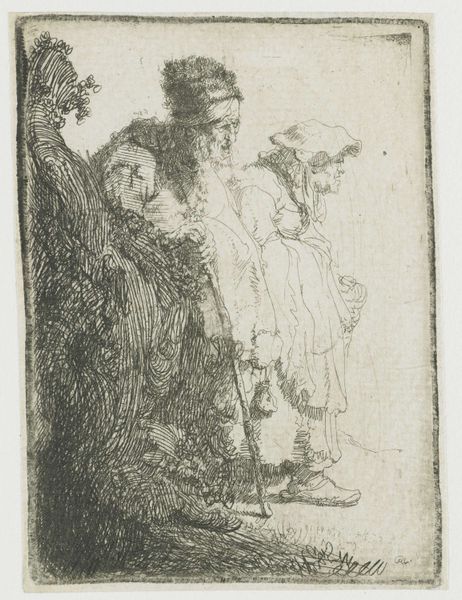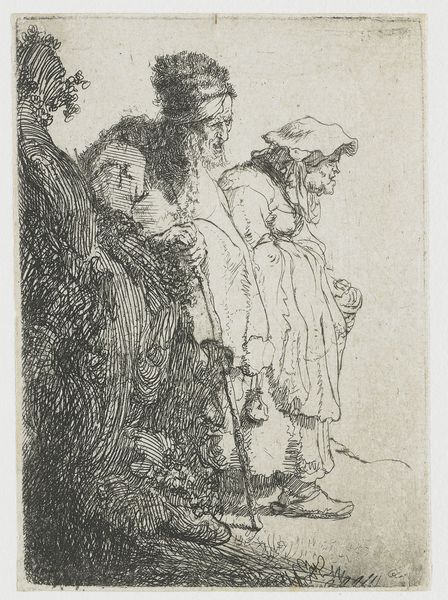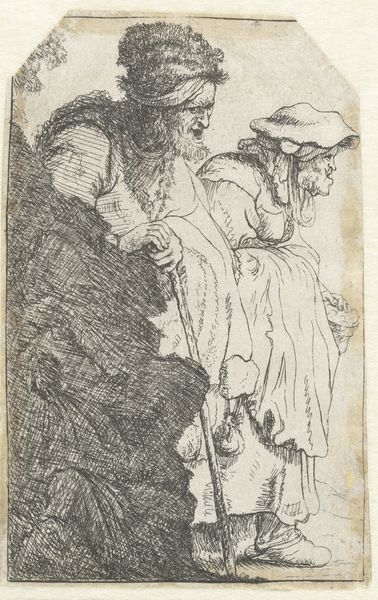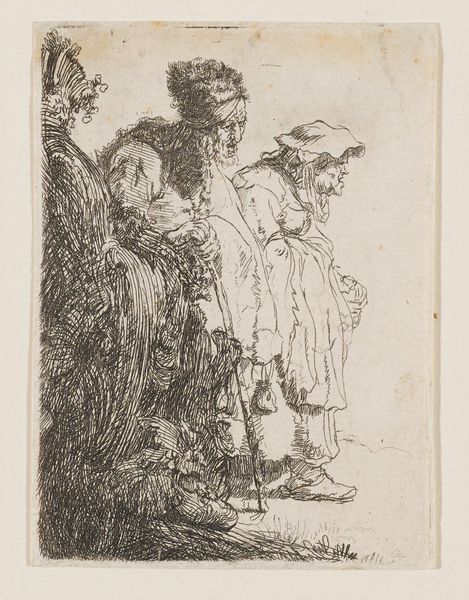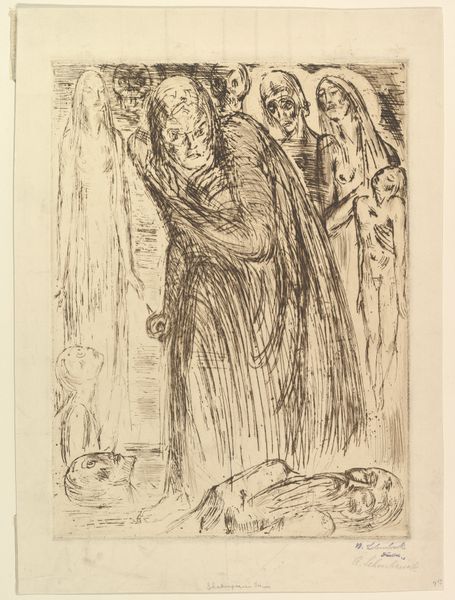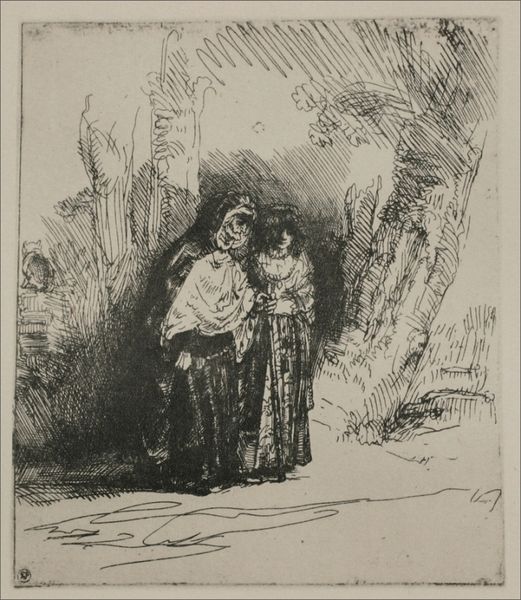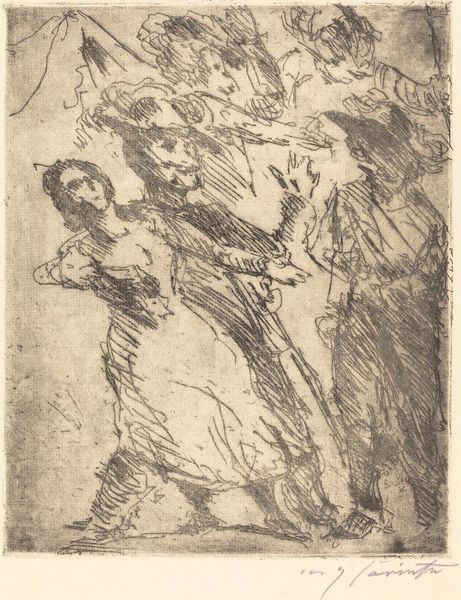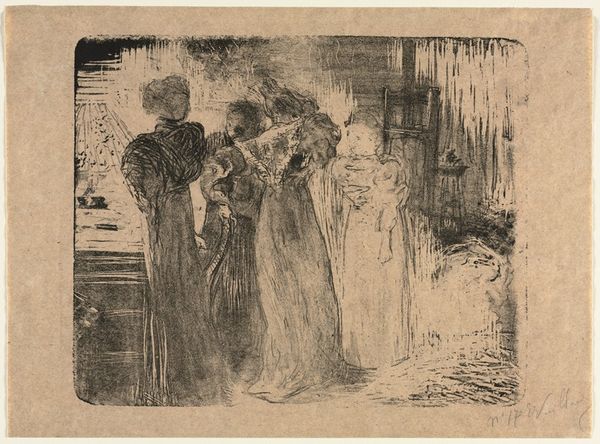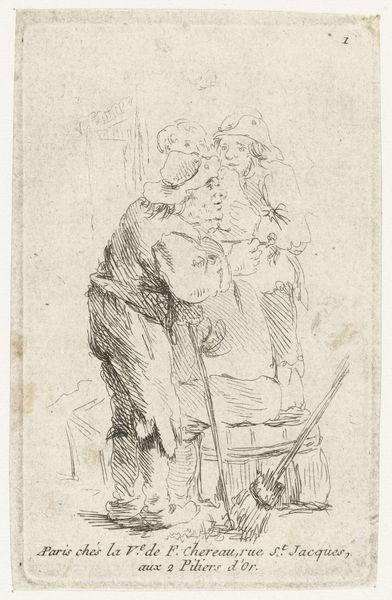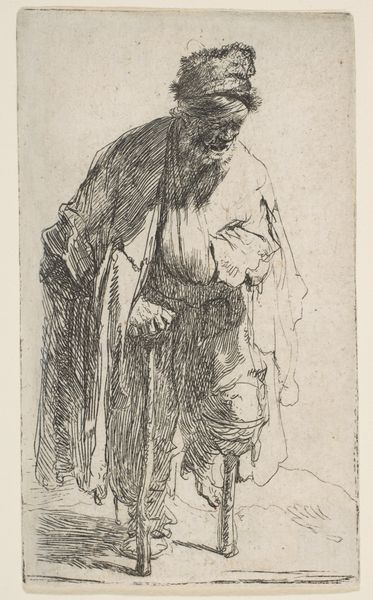
drawing, print, etching
#
portrait
#
drawing
#
baroque
#
dutch-golden-age
# print
#
pen sketch
#
etching
#
figuration
#
line
#
genre-painting
Dimensions: height 98 mm, width 67 mm
Copyright: Rijks Museum: Open Domain
Editor: Here we have Rembrandt van Rijn’s "Beggar Man and Woman behind a Bank," an etching from around 1630. It strikes me as a rather bleak portrayal. What do you see in this work? Curator: I see the weight of societal neglect etched into every line. The bank isn't just a physical barrier; it’s a symbolic one, representing the divide between the affluent and those forced to the margins. Notice how Rembrandt uses shadow - almost like a curtain to intensify the contrast, creating a stark visual metaphor for their obscured existence. Consider too, how even today the images and symbols around poverty resonate deeply within our cultural memory and invoke very complex feelings. Does it evoke empathy or something else? Editor: Something else, definitely. There's almost a feeling of…discomfort? Curator: Precisely! That discomfort is key. Rembrandt challenges the viewer to confront uncomfortable truths about social inequality. This goes beyond a simple genre painting, delving into the psychological weight carried by both the subjects and the audience observing them. This print participates in a lineage of images of poverty going back to the Middle Ages, echoing in contemporary forms today, with new symbols like encampments. It is like a continuity of visual symbols over time, isn't it? Editor: I hadn't considered that at all. I was focused on the artistic technique and how well Rembrandt captured their expressions. Curator: And the expressions themselves? Are they despairing, or something else? Remember the cultural codes for representing certain figures are not random; Rembrandt may or may not have sought to critique these. Editor: It is ambiguous. Thanks, I will certainly consider that in my essay. Curator: Indeed. Remember, these images, however old, leave their mark, echoing through time in both conscious and subconscious ways.
Comments
rijksmuseum about 2 years ago
⋮
Rembrandt derived much inspiration from the figures he came across outdoors. However, he did not etch out on the street. He produced his prints indoors, in his workshop. His observations are no less telling for that fact. Both the beggar couple and the poor wretch with the wooden leg seem to be calling out loud, while the peasant in the middle looks on expectantly.
Join the conversation
Join millions of artists and users on Artera today and experience the ultimate creative platform.
